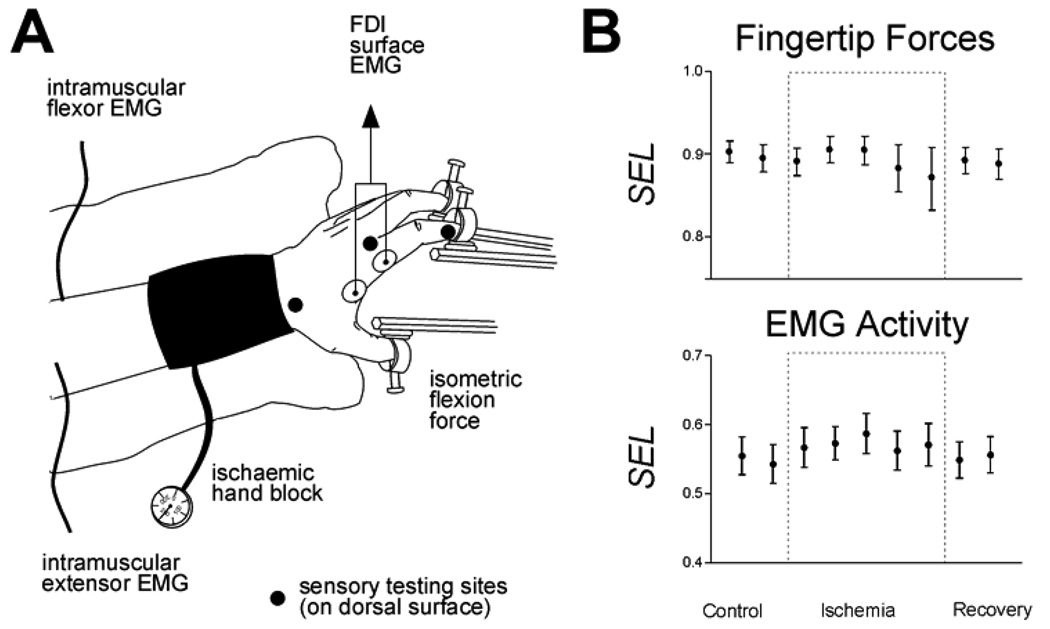Figure 4.
Ischemic nerve block at the wrist. A. The subject exerted flexion forces with each digit in turn against stationary load cells as intramuscular EMG was recorded from different regions of the extrinsic flexor muscle, flexor digitorum profundus, and the extrinsic extensor muscle, extensor digitorum communis. After performing control blocks, the hand was rendered ischemic by inflation of a pediatric blood pressure cuff about the wrist. The subject continued to perform finger flexions while the progress of the ischemic nerve block was monitored with sensory testing at the three sites marked and with surface EMG recorded from the first dorsal interosseous muscle (FDI). After cutaneous sensation and EMG were lost in the hand, the cuff was deflated and the subject continued to perform fingertip flexion forces during recovery from ischemic nerve block. B. Selectivity indexes calculated for the force exerted by each instructed digit averaged across fingers and across subjects are shown above, and selectivity indexes calculated for the EMG activity recorded from intramuscular electrodes averaged across recordings and across subjects are shown below. Neither the selectivity of fingertip forces nor that of EMG activity changed while the hand was denervated.

